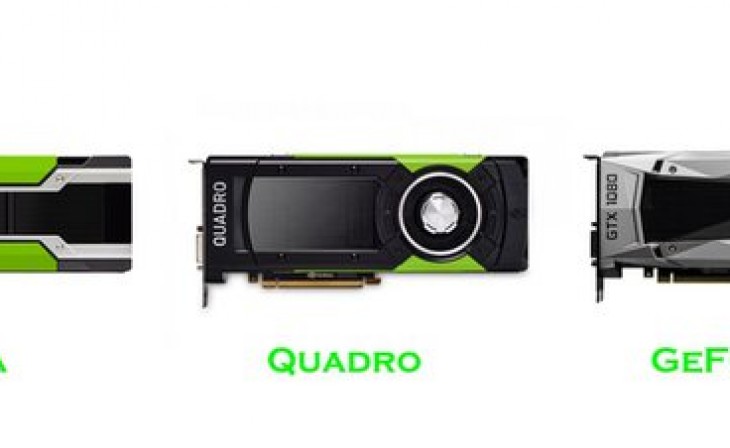The Difference Between a Gaming Graphics Card and a Normal Graphics Card (Video Card)
Purpose and Target Audience
The primary difference between gaming graphics cards and normal graphics cards lies in their intended purpose and target audience. Gaming graphics cards are specifically designed to deliver high-performance graphics, rendering immersive visuals and smooth gameplay in demanding video games. They cater to avid gamers who require exceptional graphics processing capabilities to experience their games at their best.
On the other hand, normal graphics cards, also referred to as workstation or productivity graphics cards, focus on professional applications such as graphic design, video editing, 3D modeling, and other computationally intensive tasks. These cards prioritize precision, stability, and compatibility with professional software rather than prioritizing the raw gaming performance.
Performance and Specifications
When it comes to performance, gaming graphics cards are optimized for rendering complex, real-time graphics at high frame rates. They feature higher clock speeds, more CUDA cores (NVIDIA) or Stream Processors (AMD), and larger VRAM capacities. These specifications allow gaming graphics cards to handle the demands of modern games, delivering stunning visuals, smooth gameplay, and support for advanced features like real-time ray tracing and AI-enhanced graphics.
Normal graphics cards, on the other hand, may have lower clock speeds and fewer CUDA cores or Stream Processors compared to gaming counterparts. Instead, they focus on precision and stability, ensuring accurate and reliable rendering for professional applications. These cards often feature specialized hardware, such as ECC (Error-Correcting Code) memory, which helps to prevent data corruption and maintain accuracy in professional workflows.
Cooling and Power Consumption
Gaming graphics cards are known for their robust cooling solutions and power-hungry nature. To handle the intense processing required during gaming sessions, these cards are equipped with high-performance cooling systems, consisting of multiple fans, large heatsinks, and heat pipes. These cooling solutions help dissipate the heat generated by the powerful GPUs, ensuring optimal performance and preventing overheating.
In contrast, normal graphics cards typically prioritize efficient cooling solutions that are optimized for a quieter operation. Since professional applications don't always require the same level of GPU load as gaming, normal graphics cards may feature smaller heatsinks and fans to achieve a balance between cooling and noise levels.
Furthermore, power consumption differs significantly between gaming and normal graphics cards. Gaming graphics cards generally consume more power due to their higher clock speeds and greater processing capabilities. They often require dedicated power connectors from the power supply unit (PSU) to meet their energy demands. Normal graphics cards, on the other hand, tend to have lower power requirements, making them more suitable for systems that prioritize energy efficiency or operate within certain power limitations.
Software Features and Support
Gaming graphics cards often come bundled with software features and optimizations tailored specifically for gaming. These features include overclocking utilities, game-specific optimizations, and RGB lighting controls to enhance the gaming experience. Additionally, gaming graphics cards receive regular driver updates from manufacturers, focusing on optimizing performance and compatibility with the latest game titles.
Normal graphics cards, being targeted at professional applications, come with software features and optimizations catering to specific industries. For example, they may offer enhanced support for professional software suites like Adobe Creative Cloud, Autodesk, or SolidWorks. Manufacturers often release certified drivers that ensure stability and compatibility with these software applications, providing professionals with a seamless workflow.
Pricing and Availability
Another significant factor that sets gaming graphics cards apart from normal graphics cards is their pricing and availability. Gaming graphics cards, especially those positioned as high-end or enthusiast-grade, tend to have higher price tags due to their advanced features and cutting-edge technologies. These cards may also be subject to high demand and limited availability, particularly during new product launches or in periods of increased demand from gamers.
Normal graphics cards, being targeted at professional users, often have a different pricing structure and availability. They may be priced competitively for professionals who prioritize stability, accuracy, and software compatibility over raw gaming performance. Availability is typically more consistent for normal graphics cards, as they are not as heavily impacted by the fluctuations in gaming market demand.
Also Check TP-Link Archer A7 AC1750 Smart WiFi Router
Conclusion
In summary, gaming graphics cards and normal graphics cards serve different purposes and cater to distinct user groups. Gaming graphics cards prioritize raw gaming performance, offering high clock speeds, ample VRAM, and advanced features for immersive gameplay. On the other hand, normal graphics cards focus on precision, stability, and compatibility with professional applications. They provide accurate rendering for tasks such as graphic design, video editing, and 3D modeling.
Understanding the differences between these two types of graphics cards is essential when choosing the right one for your specific needs. Whether you are a passionate gamer seeking the best gaming experience or a professional in need of powerful rendering capabilities, knowing the distinctions between gaming and normal graphics cards will help you make an informed decision that aligns with your requirements.




